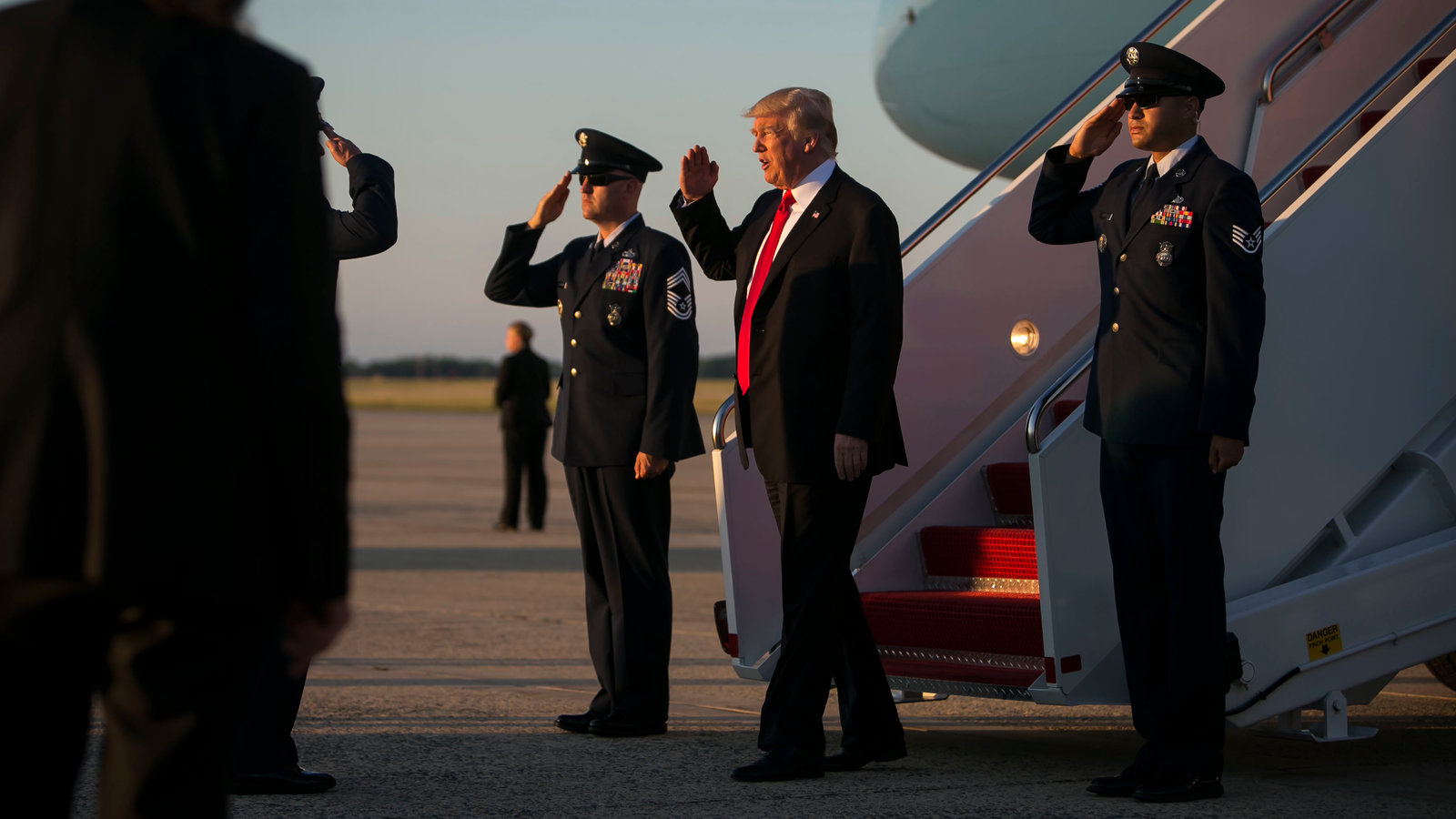Analyzing Trump's Stance: The Transgender Military Ban Explained

Table of Contents
The Initial Announcement and its Rationale
The initial announcement of the transgender military ban, delivered via a series of tweets and subsequent official statements in 2017, sent shockwaves through the military and LGBTQ+ communities. President Trump cited concerns about combat readiness, healthcare costs, and the potential disruption to unit cohesion as justifications for the policy. His statements often lacked specific evidence, fueling intense debate and legal challenges.
For example, in a tweet, Trump stated the military "cannot be burdened with the tremendous medical costs and disruption that transgender in the military would entail." This statement, and others like it, became the central justification for the ban.
Here are some key reasons cited for the ban:
- Healthcare Costs: The administration argued that the medical care required by transgender service members, including hormone therapy and surgeries, would place an undue burden on the military budget.
- Unit Cohesion: Concerns were raised about potential disruptions to unit cohesion and morale caused by the presence of transgender individuals.
- Combat Readiness: The administration suggested that transgender service members might pose a risk to combat readiness, although no concrete evidence was presented to support this assertion.
Legal Challenges and Court Cases
The transgender military ban immediately faced intense legal scrutiny. Numerous lawsuits were filed challenging the ban's constitutionality, arguing that it violated the principles of equal protection under the law. These lawsuits spanned various courts, resulting in a complex legal battle.
Key court cases and their outcomes significantly shaped the trajectory of the ban:
- Doe v. Trump: This case, initially successful in blocking the ban, highlighted the discriminatory nature of the policy. The outcome underscored the importance of equal protection for transgender individuals within the military.
- Karnoski v. Esper: This lawsuit and others challenged the ban on various grounds, including its impact on the mental health and well-being of transgender service members. The outcomes of these cases varied, reflecting the evolving legal landscape surrounding transgender rights.
- Supreme Court Involvement: While the Supreme Court did not directly rule on the ban's constitutionality, its decisions on related LGBTQ+ rights cases influenced the lower courts' rulings.
The Impact on Transgender Service Members
The ban had a devastating impact on transgender service members, extending far beyond the loss of their careers. Many faced discrimination, harassment, and the threat of discharge. The consequences included:
- Loss of Employment and Benefits: Transgender service members who were already serving faced immediate dismissal, resulting in the loss of their jobs, healthcare benefits, and retirement security.
- Increased Risk of Homelessness and Poverty: The sudden loss of employment and support systems left many transgender individuals vulnerable to homelessness and poverty.
- Negative Mental Health Impacts: The stress, discrimination, and uncertainty surrounding the ban significantly contributed to increased rates of depression, anxiety, and suicide attempts among transgender service members. Stories of individuals losing their careers and facing increased social stigma are unfortunately common.
Political and Societal Implications
The transgender military ban had profound political and societal implications, fueling intense public debate and polarization. The ban became a flashpoint in the ongoing struggle for LGBTQ+ rights, highlighting the divisions within American society on issues of gender identity and military policy.
Here's a look at the broader political and societal impact:
- Impact on Political Platforms: The ban became a key issue in both Republican and Democratic political platforms, with starkly contrasting views on LGBTQ+ inclusion in the military.
- Changes in Public Opinion: While public opinion on transgender rights remained divided, the ban did stimulate further public discussions and analysis of related policy and legal aspects.
- International Implications and Reactions: The ban drew criticism from international allies and human rights organizations, impacting America's image on the global stage.
Conclusion: A Lasting Legacy of the Transgender Military Ban
The transgender military ban remains a significant and controversial event in recent American history. Our analysis reveals a policy rooted in unsubstantiated claims, met with widespread legal challenges, and causing significant harm to transgender individuals. The legal battles, the human cost, and the resulting political ramifications continue to shape debates about LGBTQ+ rights and military inclusion.
Understanding the ongoing ramifications of the transgender military ban is crucial; stay informed and advocate for change. Continue your research into the complexities of the transgender military ban and find ways to support advocacy groups fighting for equality within the armed forces. The fight for equal rights within the military continues.

Featured Posts
-
 Stock Market Live Sensex And Nifty Surge Detailed Market Analysis
May 10, 2025
Stock Market Live Sensex And Nifty Surge Detailed Market Analysis
May 10, 2025 -
 Arrestan A Universitaria Transgenero Por Usar Bano Femenino El Caso Que Desato La Polemica
May 10, 2025
Arrestan A Universitaria Transgenero Por Usar Bano Femenino El Caso Que Desato La Polemica
May 10, 2025 -
 After A Racist Killing A Familys Struggle For Healing And Justice
May 10, 2025
After A Racist Killing A Familys Struggle For Healing And Justice
May 10, 2025 -
 Elon Musks Wealth Jumps Teslas Rise And The Dogecoin Effect
May 10, 2025
Elon Musks Wealth Jumps Teslas Rise And The Dogecoin Effect
May 10, 2025 -
 T Mobile Data Breaches Result In 16 Million Penalty A Three Year Timeline
May 10, 2025
T Mobile Data Breaches Result In 16 Million Penalty A Three Year Timeline
May 10, 2025
